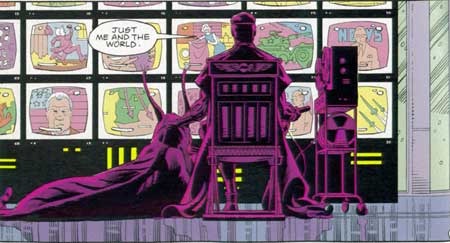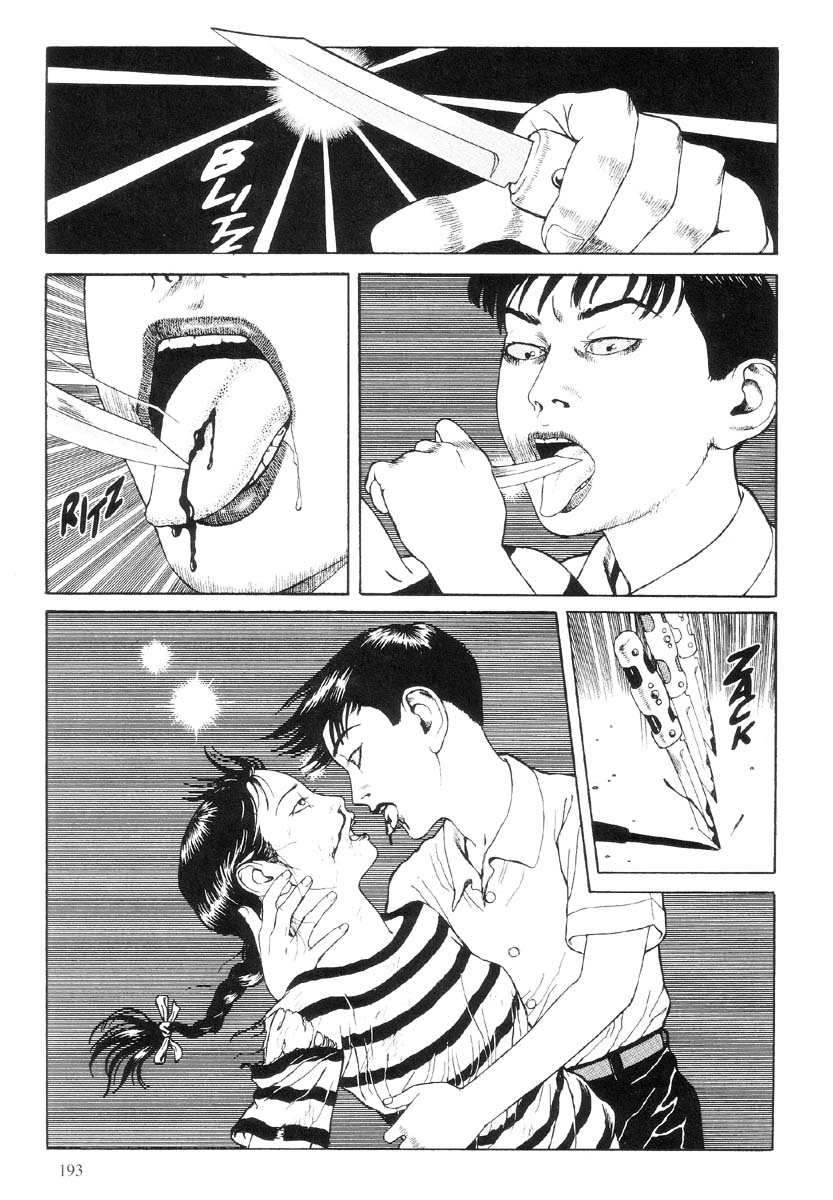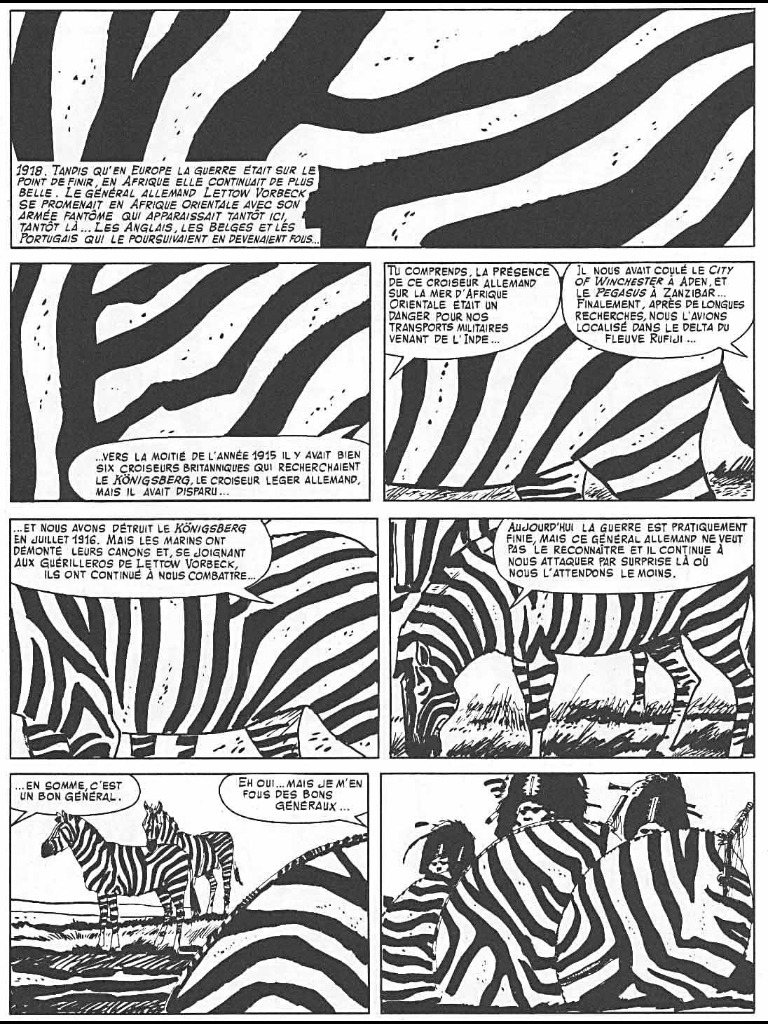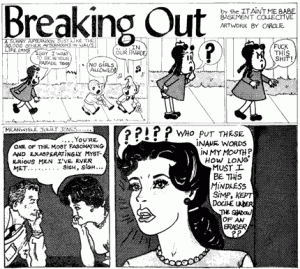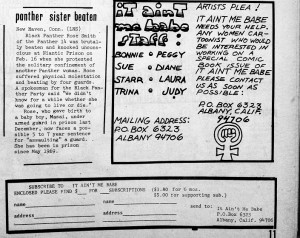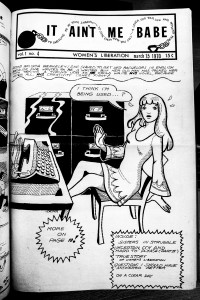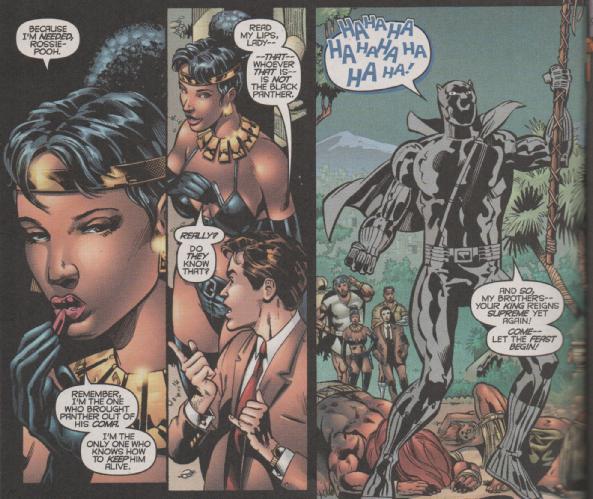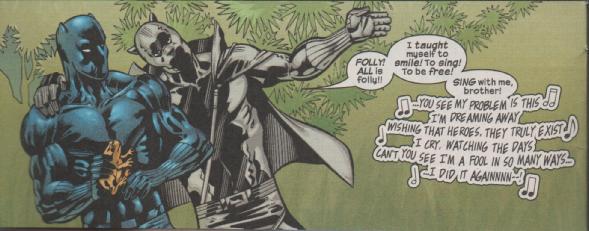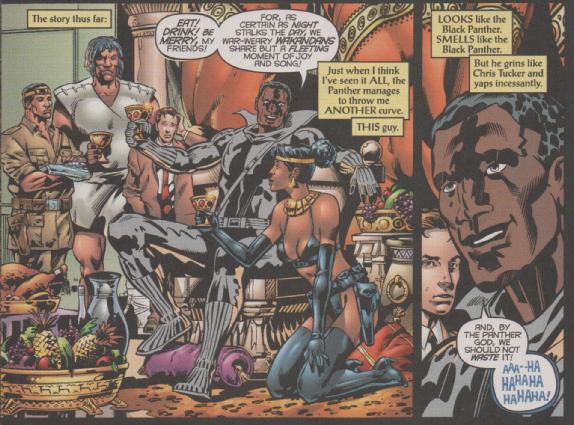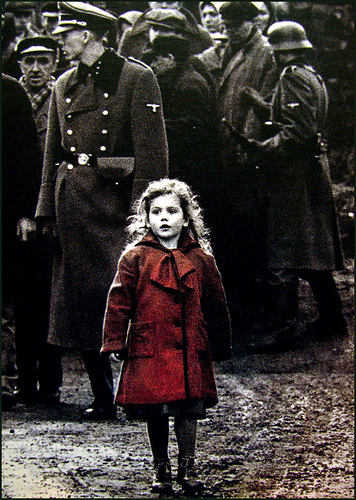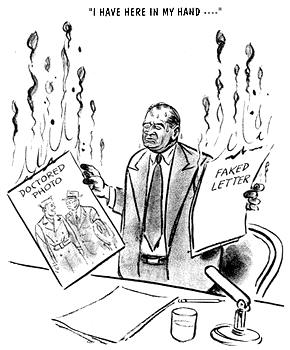This is late because I was feeling lazy. Also, who needs comics criticism anyway?
The following list is meant to be as inclusive as possible in terms of subject matter, stylistic tone, and ideas. I don’t have to agree with all of the opinions expressed in these pieces for them to be included. After a few years producing this list with other comics critics, I’m trying to anticipate the type of articles others might find attractive. This is probably a foolish endeavor but there you have it.
The list was at least twice as long before being whittled down to the links recorded below. Also, just to pre-empt anyone stating the obvious, there’s not much manga criticism listed below. Anyone with recommendations from that side of the pond should make them known in comments.
I’ve listed a few Hooded Utilitarian pieces here but have restricted myself to writers who are not (or were not) regular contributors. If you think these articles are unworthy of attention, just say so in comments as well. HU regulars have otherwise been ignored in this survey.
[Ozymandias: Megalomaniac and Comics Critic]
Listed by author (in alphabetical order).
Darryl Ayo on Jason Karns’ Fukitor (and the banal subversiveness of geriatric alternative cartoonists). This was a comment made during the Jason Karns’ affair at TCJ.com. Memories of it should have faded with time but this link is for posterity. A lot of tight slaps in this one. Oh, there’s some good work done by Jacob Canfield at the top of the comments thread as well, quietly chipping away before the pile on started.
James Baker – “Satirising a Prince, or Making Light of a Culture of Errors.”
David M. Ball on Ivan Brunetti’s Aesthetics: A Memoir
Eric Berlatsky – “Between Supermen”
Eddie Campbell – “The Literaries”
Articles on superheroes will always be more popular but I doubt if there have been many articles in 2013 relating to the art of comics which have been more celebrated than Campbell’s tangential attack on the writers of this site. While the majority of writers on HU disagreed with the findings of Campbell’s article, it’s pretty clear to me that it has been enormously galvanizing and influential for many critics who haven’t thought long and hard about the form about which they write. One might even call it a “spiritual” injection for some members of the comics critical community.
Ken Chen – “The Devil You Know” (on Hellblazer and John Constantine)
Hilary Chute – “Secret Labor: Sketching the connection between poetry and comics” (see also Noah’s response to the article).
Rob Clough – “Coming of Ages: New School”
Brian Cremins – “Nostalgia and Strange Tales #180″
Joseph Epstein – “Man With a Line – The gimlet eye of Saul Steinberg.”
Craig Fischer – “My Friend Dave.” This was Fischer’s “big” piece for 2013 and needs no introduction. I would also like to highlight his article on Michel Rabagliati’s Paul. It takes a kind of genius to elevate the pedestrian to something worth reading. I’ve read all of one big comic by Rabagliati and a few of his short stories. Nothing in Fischer’s article has altered my view of his work. Fischer’s first pictorial example of the vacuum mimicking the effect of a Dilatation and Curettage seems utterly hackneyed and reminded me of the clumsiness which confronted me when I read Paul Has A Summer Job. That comic seemed like the perfect combination of sentimentality and emotional distance, a remarkable feat if you think about it. Still to write at such length, in such detail, and with such passion about a comic deserves some sort of recognition. If only all comics were treated in this fashion, that would be the beginning of wisdom (or least the beginning of a discussion).
Paul Gravett – “The Principality of Lichtenstein: From ‘WHAAM!’ to ‘WHAAT?'”
Gary Groth – “Entertaining Comics”
Jesse Hamm – “Toth’s Line” (Parts 1 and 2)
Jeet Heer – “Hitler’s Cartoon Problem and the Art Controversy”
John Hogan – “ART…It’s Wacky! Conceptual Comics and Comic Conceptualism in the work of Mark Newgarden and Richard Prince”
Ryan Holmberg – “Tezuka Osamu Outwits the Phantom Blot.” For those not enthused by the manga of Tezuka there’s also his take on “The Name Garo: Shirato Sanpei and the Indo-Manga Connection”
Kevin Huizenga on Palookaville #21
Sarah Horrocks – “Suehiro Maruo’s The Laughing Vampire and the Aesthetics of Horror in Comics”. Horrocks is one of the more interesting “new”voices to have appeared on the comics criticism scene this year. She distinguishes herself by a sharp attention to the image in comics.
Horrocks is a firm believer in Twitter/Tumblr comics criticism. The revolutions began in March 2006 and February 2007 respectively. Sites like TCJ.com (and the one you are reading now) are like old jalopies moving at snail speed and utterly irrelevant:
“Many artists, not all, need attention and smart feedback through social media in real time…It’s like I can throw up a dirge of pages from different artists, created connections, and canon in real time while writing critically about said connections and contexts.”
“I’d actually like to see more like REALLY long form works in criticism. Like go into books or even ebooks, and hit off on criticism that actually takes the time to really get to know a work. The 1500 to 3000 word article seems like an anachronism that only continues to exist because that’s the way it’s been for a minute. I don’t think that’s really what the audience wants. It’s too short to say much, and it’s too long to spur conversation–beyond the dedicated who like to type long winded responses to things–holdouts from message boards that no longer exist.”
The age of paper (developed 2nd century AD) never existed. Time to consign the highly absorbent print TCJ to the toilet roll rack. The rest of the writers here will be grabbing their ear trumpets and shuffling off to the the nearest old age home in due time.
Illogical Volume on The Lovely Horrible Stuff
Nicholas Labarre – “Incomplete descriptions in Raymond’s Secret Agent X-9”
William Leung – “Who Whitewashes the Watchmen?”
This was one of the most popular pieces on HU in 2013—a thorough evisceration of an artistic abomination. It’s also the most detailed analysis of Before Watchmen I’ve seen.
Bob Levin – “Ware and ‘When’ (and What About It)”
Robert Loss – “Real Basic Reality, Like AAAAAAAAAARGHHHH!”: Notes from Mark Beyer: With/Without Text. Also see his article titled, “Neil Gaiman’s “Façade” and Patronal Feminism”
David Mandl on Anarchy Comics: The Complete Collection
Joe McCulloch on Jim Woodring’s Fran. Purely from the perspective of style, I think this is probably Joe’s best written article of 2013.
Adam McGovern on Frank Santoro’s Pompeii. The praise is high (“Santoro’s work resembles the preliminary sketches of the finest canonical painters…”) and some might say questionable, but this is one of the more passionate and beautiful descriptions of a comic I’ve read this year. Dissuade me if you must.
Hannah Miodrag – “Narrative Breakdown in The Long and Unearned Life of Roland Gethers.”
Adrielle Mitchell – “Do Alienation Theories shed Light on Contemporary Comics?”
Andrei Molotiu – “Might as well be abstract, Part 3”
Novi Magazine – “Critiquing Impressions of Feminine Storytelling: In Defense of Moto Hagio’s Heart of Thomas”
Osvaldo Oyola Ortega – “Queer Silence and the Killing Joke”
Ken Parille – “Red People for a Red Planet” – This one can be fairly summarized as a classic Parille close reading special. He also had an interesting take on Frederic Wertham and the State of Comics Criticism.
Janean Patience and Jog on Marhsall Law (Parts One, Two, and Three). Patience also writes affectionately about the old black and white Matt Wagner Grendels here. But let’s be honest, it only gets good with Devil by the Deed.
Jed Perl – “Art Spiegelman is Comic’s Most Pretentious Faux-Artist.” I think Spiegelman has the “pretentious” part down pat but isn’t calling him a “faux-artist” a tad too cruel…? It’s all been said before but I don’t think in quite so prominent a venue.
Sean Rogers – Review of Hand-Drying in America and Other Stories. I think this review probably has the edge over his article on Tom Kaczynski’s Beta Testing the Apocalypse.
Nicole Rudick – “Life on Mars: Gary Panter’s Dal Tokyo.”
Tom Scioli – “Silver Surfer #1: An Examination”
This one has some nice readings with a few reservations. I don’t think the Silver Surfer would have been improved with a “sidekick”. I also understand that Stan Lee is a hate figure in the alternative comics-verse and I’m happy with people sticking it to Lee and his overwrought writing and hucksterism, but I wish they would see fit to use the same brush when describing Kirby’s prose and frequently ridiculous plots in his latter years. Kirby is the aggrieved party in his disputes with Marvel but that has no bearing on how we should assess the comics. It may be an instantly forgettable comic but I’d take Silver Surfer #1 over anything with the Black Racer in it for sure. Scioli had another article of note in 2013 titled “Whatever Happened to Barry Windsor-Smith in the Comics Conversation.”
Robert Steibel – “Do I have the guts to defy Odin once again?”
The biggest comments war on TCJ.com in 2013 (outside the Jason Karns affair) concerned something quite familiar. Steibel usually writes at Kirby Dynamics on the Kirby Museum site, and I do believe that at least one of his pieces has gone through the nomination process in past years. Once you’re aware of Steibel’s loyalties, you can more or less sit back and enjoy the hagiography. This one is listed here because it very much represents a blast from the past (or maybe a past that never left us) – the Spotless cartooning icon vs. his Satanic majesty (Stan Lee for those not keeping up with revisionist history). The Odin of the title is a sly reference to Lee who is the All Father without actually being the main star of the comic. Objectivity? I say thee nay!!
J. Ryan Stradal – “The Details of a Passing Landscape: Ben Katchor’s Hand-Drying in America.”
Barbara Uhlig – “‘Chercher dans le Noir’ – the gap as motif in Caboto.” Also see Uhlig’s related article, “The dissolution of the pictorial content in Hugo Pratt’s ‘Corto Maltese’ and Lorenzo Mattotti’s ‘Fires’”
Emily Villano on Anything That Loves
Qiana Whitted – “Sound and Silence in the Jim Crow South”
Peter Wilkins – “Anthropomorphism and Allegory in Renee French’s Micrographica”
Kristian Williams – “Sacrificing Others: Watchmen, Fail-Safe, and Eichmann in Jerusalem“.
Paul Williams – “Literary Impressionism and Chris Ware’s Jimmy Corrigan: The Smartest Kid on Earth”
Matthias Wivel – “Institution and Individual”
Andi Zeisler – Deer Dogs and Moosefingers: Lisa Hanawalt’s “My Dirty Dumb Eyes”

